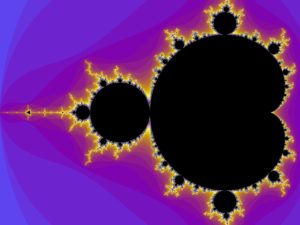 Daniel Tammet was asked to memorize the number Pi.
Daniel Tammet was asked to memorize the number Pi.
As we may remember from school, Pi is an irrational number that is defined as the ratio of the circumference of a circle to the diameter of the circle. It is also related to many other different mathematical equations including those that define “fractals” called the Mandelbrot set (above picture). The number has an infinite series of digits with no discernable pattern, starting with 3.1415926358979…
 Tammet was able to remember over twenty thousand digits of the infinite array in just over 5 hours. He stated that he could “see” unique colors, shapes and textures for every number up to 10,000, which helped him order and remember the fantastically long number.
Tammet was able to remember over twenty thousand digits of the infinite array in just over 5 hours. He stated that he could “see” unique colors, shapes and textures for every number up to 10,000, which helped him order and remember the fantastically long number.
There are perhaps dozens of people in the world with such extreme unusual cognitive abilities, but there are many thousands, perhaps millions with less extreme but still unusual cognitive abilities.
The previous post Extraordinary Mental States: Overview outlined the array of extraordinary human experiences including increased cognitive and artistic capabilities, paranormal brain abilities, and full immersion experiences with changes in meaning and perspective. Important questions were asked about whether these talents lie dormant in all of us, and whether this has something to do with our sense of identity and self, called the default mode network by neuroscientists. Another question posed was whether these various states occur as a result of neuroplasticity described in other posts, or the release of already existent brain regions that are suppressed by normally functioning brains.
This post will start the discussion about increased cognitive and artistic abilities. It will include super vision, super autobiographical memory, super integrated brains, synesthesia, savants, and accidental savants.
Super Human Vision
 An extraordinary power of vision is available to some who are able to see millions of colors unavailable to others. While it is not commonly known, ordinary humans have the capacity to see a wide range of hues with the three types of color cone cells each responding to a different range of light waves. Thousands of different words are available for these varied hues that are widely experienced. Each cone can distinguish approximately a 100 different shades or hues based on very small differences in wavelength. A hundred different hues for each cone cell added to the hues from each of the two other cone cells, gives the large number of 100 times 100 times 100 –- that is a million variations of color hues.
An extraordinary power of vision is available to some who are able to see millions of colors unavailable to others. While it is not commonly known, ordinary humans have the capacity to see a wide range of hues with the three types of color cone cells each responding to a different range of light waves. Thousands of different words are available for these varied hues that are widely experienced. Each cone can distinguish approximately a 100 different shades or hues based on very small differences in wavelength. A hundred different hues for each cone cell added to the hues from each of the two other cone cells, gives the large number of 100 times 100 times 100 –- that is a million variations of color hues.
Those with super vision, who see a hundred times more than the ordinary million hues, have a fourth cone. Studies previously had shown that men with color blindness (it seems only men have color blindness) have two functioning cones and one mutant non-functioning cone. But, it was found that women related to these men with color blindness may have four cones and in at least a few of these, all four cones worked. These tetra-chromats were the ones that saw the vastly greater number of hues.
Super Autobiographical Memory
To study memory, distinctions are made between the ability to remember what is just perceived through the senses, the ability to remember an object after a few seconds, after few minutes (“short term memory”) and long term.
 Another important distinction is made between memory that is consciously remembered, called declarative, and unconscious, “muscular” learning, such as riding a bicycle. Another model of memory divides short term into specific types such as visual spatial information or language. Memories also can be classified as to how vivid they are.
Another important distinction is made between memory that is consciously remembered, called declarative, and unconscious, “muscular” learning, such as riding a bicycle. Another model of memory divides short term into specific types such as visual spatial information or language. Memories also can be classified as to how vivid they are.
The final classification that I will mention is autobiographical memory defined as specific periods of our lifetime, and the events and knowledge related to these periods.
Perhaps several dozen unusual people have been found to have exceptional abilities to remember details of their lives including almost every moment from the age of ten. Their reactions were similar to savants in that if you name a date, even thirty years before, they instantly and accurately tell you what happened on that day. A study recently confirmed the accuracy of this information.
One person with super autobiographical memory, AJ, had enlargement in specific regions of the brain including the temporal lobes and hippocampus, which houses the seat of conscious memory, as well as the caudate nucleus, which includes unconscious habit information.
Recent brain studies of these people reveal striking increases in axonal connections in nine different regions of the brain all connected with autobiographical memory.
Human Sonar Neuroplasticity
 Recent studies have shown that not only do brains of blind people reorganize unused brain regions, but this also occurs with deaf people and those with other sensory deficits.
Recent studies have shown that not only do brains of blind people reorganize unused brain regions, but this also occurs with deaf people and those with other sensory deficits.
One adaptation demonstrated by blind people has been the use of clicking and other sounds to send out sounds that bounce off of objects much the way bats use sonar. With the heightened auditory ability from neuroplasticity some blind people have been able to navigate in extraordinary ways with this sonar including using skateboards.
Synesthesia
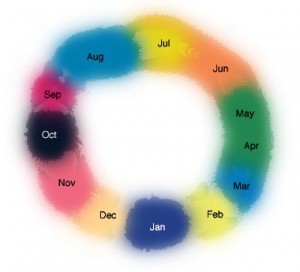 Synesthesia occurs when stimulation of one sense or a specific cognitive circuit includes perceptions and thoughts incorporating other senses and processes. It is probably much more common than previously thought.
Synesthesia occurs when stimulation of one sense or a specific cognitive circuit includes perceptions and thoughts incorporating other senses and processes. It is probably much more common than previously thought.
Most common are the inclusion of colors when perceiving letters and numbers. Other types include numbers or days with the attachment of special personalities or emotions. Another is visual motion triggering sounds. Yet, another type includes numbers or dates taking on a spatial image or scene.
There are as many variants as there are senses, and cognitive tasks, but only very few have been studied scientifically. It is more prevalent in specific families. Synesthesia has been reported in people taking psychedelic drugs, after a stroke, and during temporal lobe epilepsy. Sudden blindness and deafness can also trigger it. This form is most probably due to neuroplasticity.
Many are able to use synesthesia in art and music. But, in many types it seems to operate in the brain regions connected with meaning, rather than just shapes, tones, places and colors. Famous synesthetes include the inventor Nikola Tesla, the violinist Itzhak Perlman, the musician Billy Joel, and Syd Barrett, the founder of the musical group Pink Floyd.
Savants
 Savant skills include calendar calculating, extreme mathematical calculations, art ability for drawing and sculpture, instant music recall and performance with perfect pitch, and mechanical and spatial skills. Incredible memory is included in all of these skills, but the memory is only for the specific skill. Surprisingly, even with the extreme memory for specific items, such as calendar memorization, memory of day to day events may be faulty. The extreme savant memory might be related to unconscious “habit” memory (the type of memory involved in learned but unconscious skills such as driving cars and bicycles), which involves the striatum not the ordinary memory centers of the hippocampus.
Savant skills include calendar calculating, extreme mathematical calculations, art ability for drawing and sculpture, instant music recall and performance with perfect pitch, and mechanical and spatial skills. Incredible memory is included in all of these skills, but the memory is only for the specific skill. Surprisingly, even with the extreme memory for specific items, such as calendar memorization, memory of day to day events may be faulty. The extreme savant memory might be related to unconscious “habit” memory (the type of memory involved in learned but unconscious skills such as driving cars and bicycles), which involves the striatum not the ordinary memory centers of the hippocampus.
Perhaps 10% to 30% of developmentally disabled (recently termed Intellectualy Disabled) or autistic people have some extraordinary abilities. Savants typically have a developmental disability and then at a young age, such as 3 to 4, suddenly develop the unique skill.
Ellen Boudreaux is blind and autistic and plays music immediately and perfectly after hearing it once. Knowing a very large amount of different pieces of music, she can  immediately play anything anyone asks her to perform. She has also developed the ability to use sonar for navigation by chirping.
immediately play anything anyone asks her to perform. She has also developed the ability to use sonar for navigation by chirping.
Daniel Tammett, mentioned above, developed his abilities after seizures in childhood, diagnosed as temporal lobe epilepsy. At first he was noted to have synesthesia where every number up to 10,000 was a unique color shape and texture and he could literally see the answers to calculations. He has drawn a picture of the “shape of Pi” which is a large landscape with shapes and colors. He also can learn languages extremely rapidly. On a television challenge he learned Icelandic in a week.
 Stephen Wiltshire was autistic and mute when he started drawing. At first he used his drawings to communicate, very accurate drawings of buildings, place and animals. He started learning to talk at age nine. His extraordinary abilities included drawing extremely accurate panoramic pictures of landscapes after seeing them for a very short time.
Stephen Wiltshire was autistic and mute when he started drawing. At first he used his drawings to communicate, very accurate drawings of buildings, place and animals. He started learning to talk at age nine. His extraordinary abilities included drawing extremely accurate panoramic pictures of landscapes after seeing them for a very short time.
Kim Peek, known as the Rain Man in a famous book and movie, was born with brain damage, low IQ, with difficulty walking and the inability to dress himself. He has remarkable photographic memory — he is able to read two pages at once in seconds, the left page with left eye and the right page with the right eye. He then remembers every detail of the book. He also remembers any music he hears, and volumes of facts from the 12,000 books he has read.
Leslie Lemke has severe birth defects. He had to be force fed to learn how to swallow, and only very gradually learned to walk. Suddenly at age 16 he was found playing Tchaikovsky’s piano concerto, which he heard once on television, with no previous musical training.
Gilles Trehin started drawing at age five. He could draw pictures of three-dimensional objects including a complete imaginary town. He has developed a story line for the 250 extremely detailed drawings of “Urville”
Equally remarkable are those who become savants after brain trauma or illness as an adult.
Accidental Savants
 Jason Padgett, now 41, dropped out of college with no ability to draw or do mathematics and worked at a furniture store. Ten years ago at 41 he was brutally attacked and sustained a concussion. Two days after that injury he emerged with an unusual mathematical ability. He became obsessed with mathematical formulas, such as the Pythagorean theorem and fractals, which he sees everywhere he looks. He has drawn a picture of the shape of the mathematical number Pi. A study of his brain showed increased size in two regions of his brain related to math and mental imagery.
Jason Padgett, now 41, dropped out of college with no ability to draw or do mathematics and worked at a furniture store. Ten years ago at 41 he was brutally attacked and sustained a concussion. Two days after that injury he emerged with an unusual mathematical ability. He became obsessed with mathematical formulas, such as the Pythagorean theorem and fractals, which he sees everywhere he looks. He has drawn a picture of the shape of the mathematical number Pi. A study of his brain showed increased size in two regions of his brain related to math and mental imagery.
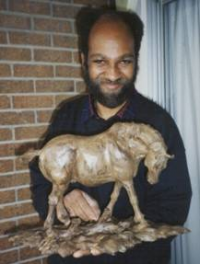 After a head injury, Alonzo Clemons, has had severe difficulties in functioning, unable to feed himself, but can accurately sculpt in three dimensions anything he briefly sees once, even a fleeting picture on television.
After a head injury, Alonzo Clemons, has had severe difficulties in functioning, unable to feed himself, but can accurately sculpt in three dimensions anything he briefly sees once, even a fleeting picture on television.
Orlando Serrell suffered a brain injury at age ten when a baseball hit him in the left side of his brain. He had no exceptional skills at that time. At first he had headaches, then his savant abilities developed. He is able to remember extreme calendar and autobiographical details, and is able to perform very complex calculations. He is able to tell the exact weather each day from the time of the accident.
In his book Anthropologist on Mars, Oliver sacks described an acquired case of artistic skills after an infection with high fever, confusion and possibly a seizure.
After a brain injury at age thirty, Fanco Magnini began painting and was able to paint the village where he grew up with extreme accuracy and detail.
A number of cases of artistic ability appeared after brain injuries including sub arachnoid hemorrhage, bilateral cerebral aneurysms, dementia and a stroke. A number of cases of frontal temporal dementia, with impaired verbal ability, suddenly developed extreme music abilities. An eight-year-old boy began calendar calculations after his left hemisphere was surgically removed for intractable seizures.
TMS and Sudden Savants
Another unusual finding is the sudden emergence of extreme ability with electromagnetic brain stimulation.
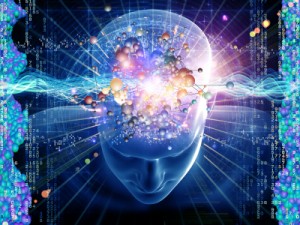 Transcranial magnetic stimulation, called TMS, uses electromagnetic pulses of rapidly changing magnetic field applied to the brain, creating small electrical currents which interrupt the normal functioning of neurons and neuronal circuits. These magnetic pulses have been successfully used to treat depression where it is believed that they interrupt overactive brain circuits.
Transcranial magnetic stimulation, called TMS, uses electromagnetic pulses of rapidly changing magnetic field applied to the brain, creating small electrical currents which interrupt the normal functioning of neurons and neuronal circuits. These magnetic pulses have been successfully used to treat depression where it is believed that they interrupt overactive brain circuits.
TMS pulses have also briefly increased capacities in some, as well as stopping speech in others. It was shown to increase drawing ability, proofreading and mathematical ability for a short time. In recent studies at least 40 people showed sometimes amazing increases in abilities.
What is intriguing about these TMS studies is that the electrical currents shut down circuits of the brain allowing others to operate better, implying that greater capacity lies beneath the circuits that manage our everyday identity and life. It is possible that our day-to-day identity is inhibiting tremendous capacities?
How does this happen?
Does everyone start as a savant with immeasurable skills, which are then shut down by our every day brain? Or is it incessant practice and specialization, as some believe? Genetic influences for mathematics, music and art can’t be ignored as a possible contributing factor. Encouragement from family certainly helps once the skill is identified. The theory that helping to eliminate the social disability will hurt the skills does not seem to be the case as several savants with social disabilities have become more social by emphasizing training of their special talents.
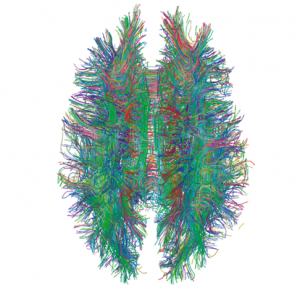 One theory of how this might occur includes damage to one brain region that is normally active and then overcompensation by other brain regions — for example, damage to left cerebral brain centers with overcompensation of right brain centers, or damage to conscious memory centers with over compensation of the unconscious “habit” striatal memory.
One theory of how this might occur includes damage to one brain region that is normally active and then overcompensation by other brain regions — for example, damage to left cerebral brain centers with overcompensation of right brain centers, or damage to conscious memory centers with over compensation of the unconscious “habit” striatal memory.
Savants possibly have impaired abstract reasoning centers, and therefore connect the process of reasoning with unusual new brain regions. This coupling of new centers could include attempts at abstract thought stimulating unconscious memory centers.
In any case, the examples of TMS’ ability to stimulate talents by shutting down existing circuits and allowing others to flourish favors the theory that fantastic ability is present but inhibited. This theory is consistent with brain injuries releasing these abilities. Also, the fact that most savants have a brain disability is consistent with this theory.
There are other factors that are consistent with underlying abilities being released. Savants don’t seem to be from a particular group, culture or society. Savants usually don’t understand why they have this talent or where it came from. They emerge suddenly without training.
Conclusion: The Ordinary Sense of “I” and the Extraordinary
If these fantastic capacities exist in our ordinary brain, the question then becomes how are they released and trained?
 Since it appears that the neuronal circuits of every day life may be inhibiting these unusual capacities, it is important to ask what ingredient of our usual behavior does this.
Since it appears that the neuronal circuits of every day life may be inhibiting these unusual capacities, it is important to ask what ingredient of our usual behavior does this.
In a previous post it was noted that a very important brain circuit, called the Default Mode Network (DMN) closely correlates with our sense of introspection and operates during non focused internal thought — that is, daydreaming, memories, future planning, wondering and thinking of others. It is very connected with the sense of who we are as a person, or the sense of “I”.
The DMN ordinarily consists of medial prefrontal cortex and posterior cingulate cortex with coherent slow brain waves. Significant recent research has shown that meditation changes the DMN, briefly for novice meditators and permanently for experienced meditators. The new default network of meditators, and hence the new sense of “I,” includes the dorsal anterior cingulate and dorsolateral prefrontal cortex. These changes are consistent with increased focus and self monitoring, but less mind wandering.
Our ordinary sense of “I”, operating constantly as a coordinating function in the brain, in many ways defines what we can and cannot do. Our sense of identity rigidly attaches to the body sense, our functioning in families, professions, and in society. Recent studies about the circuits that define body sense show that this body attachment can be altered in experiments. These changes of the body sense will be discussed in the future post on out of body experiences. In meditation some of these attachments, such as body sense, are possibly changed along with significant changes in the brain circuits of the DMN. Changing the sense of “I” in meditation can possibly allow new transcendent experiences. Does the mechanism of stimulating savant talents involve similar identity and brain changes?
Is it possible that by changing these attachments to our identity extraordinary capacity can emerge? Some research seems to show that. Future posts in this series will discuss the scientific inquiry into the sense of self and the body identification.
The next posts will discuss the effects of psychedelics, as well as unusual experiences of near death, out of body experiences and spiritual visions. The sense of “I”, the self-definition appears to also be critical in each of these states.